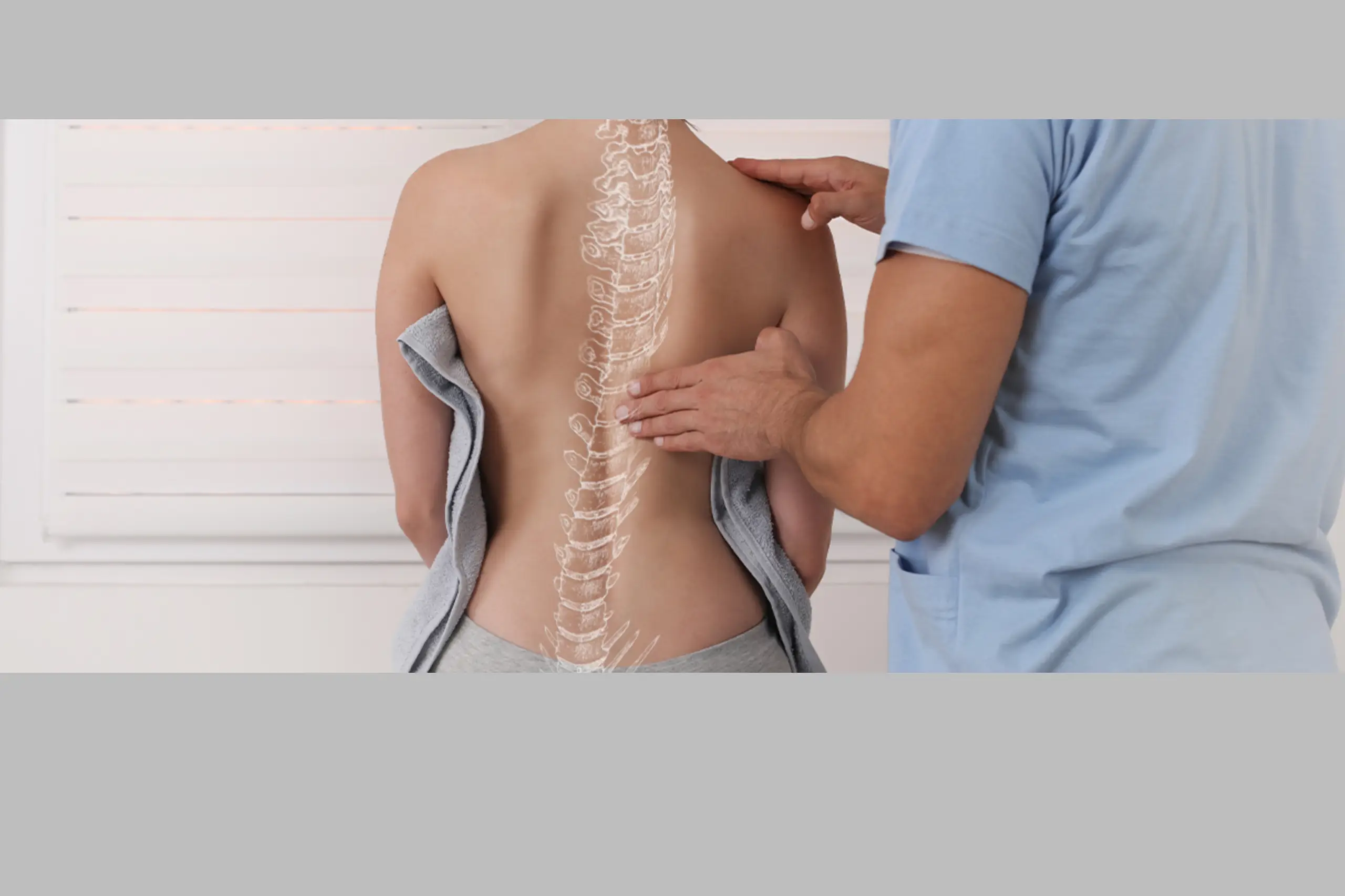Living with scoliosis can be challenging and debilitating, affecting not only physical health but also emotional well-being. But there’s hope. With the right scoliosis therapy, individuals can unlock a world of life-changing benefits. From the tried-and-true methods of braces and physical therapy to the cutting-edge innovations of modern surgical procedures, our quest is to uncover the path that leads to spinal alignment and improved quality of life.
Understanding Scoliosis: Causes, Symptoms, and Types
Scoliosis is a condition characterized by an abnormal curvature of the spine. It can affect people of all ages, but it most commonly develops during the growth spurt just before puberty. The exact cause of scoliosis is often unknown, but it can be influenced by factors such as genetics, muscle imbalances, and neurological conditions. The symptoms of scoliosis can vary depending on the severity of the curvature. Common signs include uneven shoulders, a tilted pelvis, a prominent shoulder blade, and an asymmetrical waistline. In some cases, scoliosis can cause pain, difficulty breathing, and limited mobility.
There are different types of scoliosis, including idiopathic scoliosis (the most common form with no known cause), congenital scoliosis (present at birth due to spinal malformation), and neuromuscular scoliosis (caused by underlying neurological or muscular conditions). Understanding the specific type of scoliosis is essential for determining the most appropriate treatment approach.
The Importance of Early Detection and Diagnosis
Early detection and diagnosis of scoliosis are crucial for effective treatment and management. Regular screenings, especially during adolescence, can help identify scoliosis at an early stage when the curvature is still mild and more responsive to non-invasive interventions.During a scoliosis evaluation, a healthcare professional will perform a physical examination, assess the patient’s medical history, and may order additional tests such as X-rays or MRI scans. This comprehensive evaluation helps determine the severity of the curvature and guides the development of a tailored treatment plan.
If left untreated, scoliosis can progress and lead to more severe complications, including chronic pain, respiratory problems, and psychological distress. Early detection and intervention can significantly improve long-term outcomes and prevent the need for more invasive treatments later on.
Traditional Scoliosis Treatments: Bracing and Surgery
In cases where scoliosis curvature exceeds a certain threshold or is rapidly progressing, traditional treatments such as bracing or surgery may be recommended. Bracing is often prescribed for adolescents with moderate scoliosis curvature to prevent further progression. The brace applies corrective pressure to the spine, guiding it towards a more aligned position. Bracing is typically worn for several hours each day, and the duration of treatment depends on the individual’s growth and progression of the curvature.
Surgery is considered for severe cases of scoliosis, particularly when the curvature exceeds 40-50 degrees or is causing significant health issues. The surgical procedure, known as spinal fusion, involves connecting two or more vertebrae to stabilize the spine and reduce curvature. While surgery can be highly effective in correcting scoliosis, it is also associated with risks and a more extended recovery period.
Introducing Scoliosis Therapy: A Non-Invasive Alternative
Scoliosis therapy offers a non-invasive alternative, focusing on improving spinal alignment, strengthening core muscles, and enhancing overall flexibility. Its goal is to prevent curvature progression, manage symptoms like pain, and retrain the body for better posture. Therapists employ manual techniques and exercises, sometimes using specialized equipment, to achieve treatment outcomes.
How Scoliosis Therapy Works: Techniques and Exercises
Scoliosis therapy utilizes various techniques and exercises to address the specific needs of each individual. The treatment plan is tailored to the severity and type of scoliosis, as well as the patient’s age, overall health, and personal goals.
One common technique used in scoliosis therapy is Schroth method, which focuses on three-dimensional posture correction. This approach involves a series of exercises and breathing techniques designed to elongate the spine, strengthen specific muscles, and improve postural alignment. The Schroth method promotes body awareness and teaches individuals how to maintain correct posture in their daily activities.
The CLEAR Institute method combines chiropractic adjustments, exercises, and traction to reduce scoliosis curvature and improve spinal alignment. It focuses on spinal rehabilitation, enhancing neurological function and body balance. Scoliosis therapy also involves various exercises using equipment like resistance bands and stability balls to strengthen core muscles and improve flexibility and alignment based on individual needs.
Benefits of Scoliosis Therapy: Improved Posture, Pain Relief, and Enhanced Mobility
Scoliosis therapy offers a wide range of benefits that can significantly improve the lives of those living with this condition. One of the primary advantages is improved posture. Scoliosis often leads to an abnormal curvature of the spine, which can cause the shoulders, hips, and waist to become misaligned. This can result in a hunched or uneven posture that affects both appearance and overall body mechanics.
Scoliosis therapy, such as physical exercises and specialized stretches, can help correct this misalignment and gradually realign the spine into a more natural position. With consistent therapy, individuals can experience a noticeable improvement in their posture, leading to increased self-confidence and a more aligned and balanced body.
Another significant benefit of scoliosis therapy is pain relief. Scoliosis often causes discomfort, ranging from mild to severe, due to the abnormal pressure placed on the spine and surrounding muscles. This can lead to chronic pain, muscle tension, and even nerve impingement. However, by engaging in targeted exercises and therapies, individuals can strengthen the muscles supporting the spine, alleviate pressure, and reduce pain levels.
Additionally, scoliosis therapy can enhance mobility. The abnormal curvature of the spine can restrict movement and flexibility, making everyday activities more challenging. Through a combination of physical therapy, stretching, and other therapeutic interventions, individuals can increase their range of motion and regain the ability to perform daily tasks with greater ease. Improved mobility not only enhances physical capabilities but also promotes independence and a better quality of life.
Finding a Qualified Scoliosis Therapist: Questions to Ask and Factors to Consider
When seeking scoliosis therapy, finding a qualified therapist is crucial for a successful treatment outcome. Here are some essential questions to ask and factors to consider when selecting a scoliosis therapist:
- Qualifications and Experience: Inquire about the therapist’s credentials, certifications, and experience specifically related to scoliosis therapy. It’s important to find a therapist who specializes in scoliosis and has a deep understanding of the condition.
- Treatment Approach: Ask about the therapist’s treatment approach and philosophy. Different therapists may utilize various techniques and interventions, so it’s important to find one that aligns with your goals and preferences.
- Success Rate: Inquire about the therapist’s success rate with previous patients. A reputable therapist should be able to provide references or testimonials from satisfied patients who have achieved positive results.
- Collaboration: Consider the therapist’s willingness to collaborate with other healthcare professionals involved in your care. Scoliosis often requires a multidisciplinary approach, so finding a therapist who can work effectively with other specialists is crucial.
- Supportive Environment: Evaluate the overall atmosphere and environment of the therapy practice. A supportive and compassionate environment can greatly contribute to a positive treatment experience.
Remember, finding the right scoliosis therapist is a personal decision. Take the time to research and interview potential therapists to ensure you find someone who not only possesses the necessary qualifications but also makes you feel comfortable and supported throughout your treatment journey.
Conclusion: Embracing a Brighter Future with Scoliosis Therapy
Living with scoliosis can be challenging, but with the power of scoliosis therapy, individuals can regain control over their lives and experience life-changing benefits. Improved posture, pain relief, and enhanced mobility are just a few of the advantages that scoliosis therapy offers.
If you or a loved one are living with scoliosis, don’t lose hope. Explore the various treatment options available, consult with qualified therapists, and embark on a path towards a brighter future. Scoliosis therapy unlocks potential for improved health, well-being, and confidence, leading to a fulfilling life.




